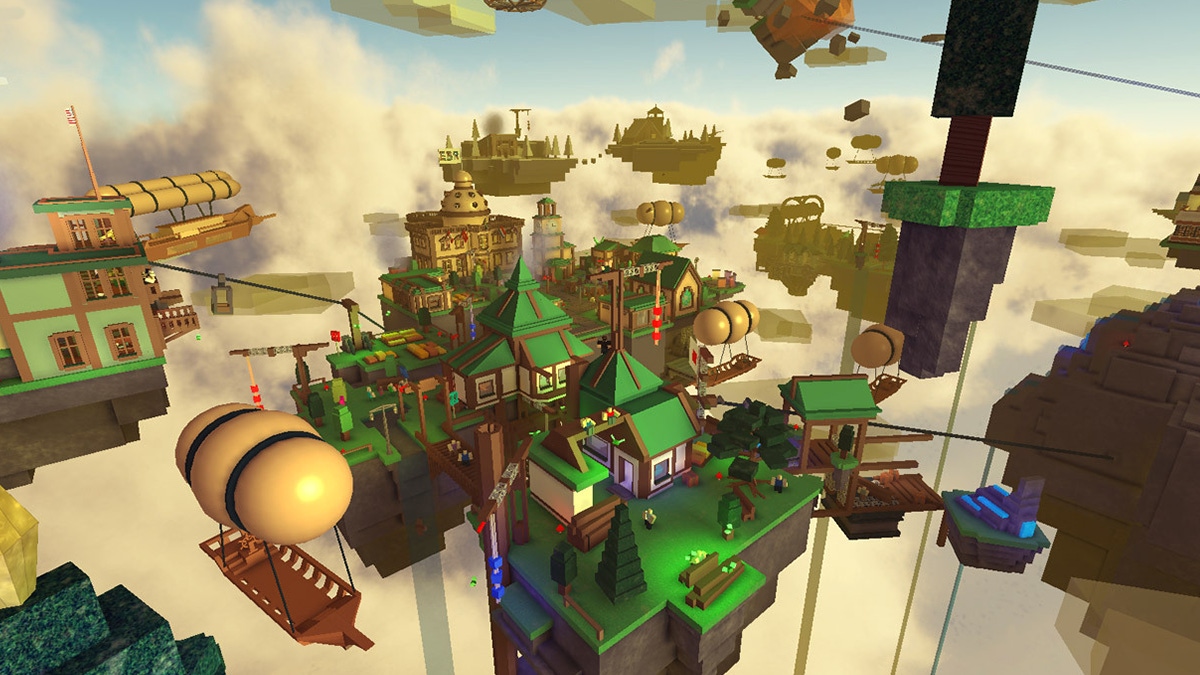What one developer learned about creating immersive environments from Roblox
How can developers ensure players become deeply involved in the worlds they build?

Immersion is a term that's bandied about a lot in the games industry, but what does it mean in practise and how can developers turn that nebulous concept into something tangible?
Speaking at Connect 2022, a development conference hosted by Roblox, Melon's director of world and environment 'ebur1n' dished out some actionable advice to help developers -- from Roblox and beyond -- ensure players become deeply involved in the worlds they build.
During the talk, ebur1n recommend using certain photography principles to help worlds make feel more alive. For instance, forced perspective can be leveraged to create optical illusions that warp perspectives and create rich, immersive environments -- while crucially saving time and money.
"[Forced perspectives] can be seen with objects that are scaled larger than they really are, or using structures to block sight lines. In several of these images (below) the background buildings are dramatically outselling the foreground structures, and this is done on purpose. It helps to populate the space without adding any extra work."
When using forced perspective, objects and buildings in the background can be less detailed than those in the foreground, which is a godsend when it comes to optimization. Effects like fog can also be added to create a barrier between players and certain assets, helping to deliver immersion without compromising performance.

Ebur1n also discussed how lighting can be used to create immersion, and said the tool is "one of the simplest ways" to pull players in. They recommended that Roblox developers in particular familiarize themselves with Roblox Studios' built-in lighting tools, explaining how specific properties should be manipulated depending on the type of experience you're attempting to create.
"In Roblox Studio, ambient and outdoor ambient are important for playing around with shadow. Ambient is normally referred to as the color of shadows, although more technically it's the colour of an object when there is a shadow. Altering these two properties can allow you to shift the mood and greatly aid in creating more fantastical environments," said Ebur1n.
"For creating more realistic environments, it may be better to play with the environment diffuse scale and environment speculator scale properties. Environment diffuse scale deals with how light is reflected on an object based on the object color. In some places it can be used in place of ambient and outdoor ambient.
"Environment speculator scale deals with light reflected on objects, depending on the environment. Adjusting this can give materials like metal more realistic reflections, allowing for more realistic enviroments."

Crucially, it's also important to experiment. Ebur1n added that it never hurts to embrace a trial-and-error philosophy to see what else you can conjure up. Off-piste experimentation might not always deliver results, but it can deepen your understanding of how certain tools combine and, if you're luck is in, could churn out something extraordinary.
Finally, when it comes to actually population your environments with users in mind, the key factors to keep in mind are scale and distance.
"Key locations should all be within sight and walking distance [of players]. It's important to make sure players can access points of interest quickly after spawning in a game," continued ebur1n.
"In this image we can see that every single point of interest is locate right where the player will spawn. This way you retain players for a longer period of time. If players are stuck in the middle of nowhere or unable to find something, players will leave your experience thinking there's either nothing there, or that it's too far away to care about."

You can hear more from the Roblox developer community this week at Connect 2022.
About the Author(s)
You May Also Like







.jpeg?width=700&auto=webp&quality=80&disable=upscale)








